The Advitiya Foundation initiated the programme in Karnataka to address the correlation between outdated education systems and high dropout rates in the state.
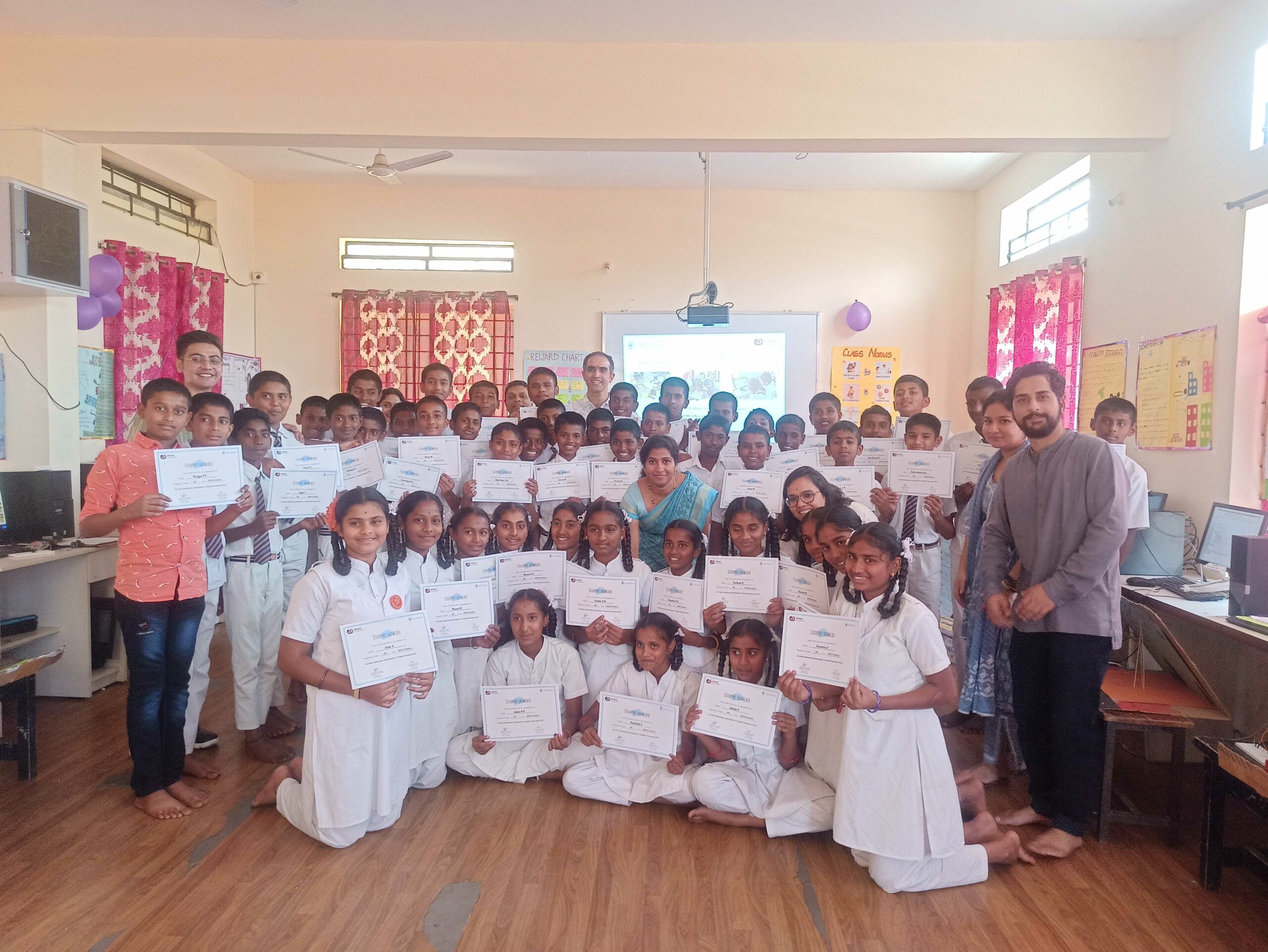
Pilot Batch at the Karnataka Residential Education for Students. (Deeksha Devadiga/South First)
Four months ago, eight standard students of Morarji Desai Residential School in Devanahalli in Karnataka were learning how to use the paint tool in their computer classes.
On Saturday, 9 March, the same students looked more like professionals as they presented their projects completed using multiple computing tools like Scratch, Raspberry Pi, Python, and more.
Four months ago, the Advitiya Foundation, in collaboration with the Pi Jam Foundation, launched the Code for Karnataka programme, aimed at imparting computational thinking and computer education to government school students.
The Advitiya Foundation, established in August last, comprises professionals with diverse backgrounds, including management consultants, engineers, and political consultants, united by a common goal of bringing lasting change beyond conventional political consulting.
The initiative originated from a collective realisation that professionals like them could contribute to societal development by introducing modern ideas in education.
Focused on sectors such as education and skill development, Advitiya identified a critical need to bridge the gap in computer education between privileged and underprivileged students.
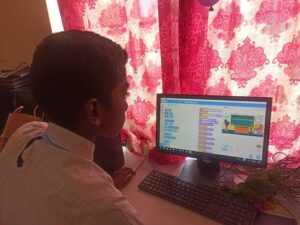
There is a correlation between outdated education systems and high dropout rates in Karnataka. (Deeksha Devadiga/South First)
Pranav Ravikumar, Co-founder of Advitiya, spoke to South First about the challenges in the current education system.
“Recognising the outdated curriculum and a lack of emphasis on computational thinking in the current educational system, Advitiya Foundation identified the need for a programme that would ignite excitement among government school students.”
This enthusiasm, it believed, could encourage students to pursue education beyond the 10th and 12th grades, ultimately leading to better career opportunities and a reduction in the dropout rate.
Advitiya chose to initiate the programme in Karnataka to address the correlation between outdated education systems and high dropout rates in the state.
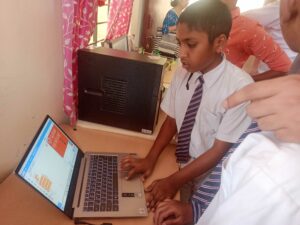
The course design focused on coding, problem-solving, design thinking, and other essential skills. (Deeksha Devadiga/South First)
The primary objective was to introduce coding to government school students and make it an exciting and engaging experience, thus challenging the stereotype of underprivileged students being limited to blue-collar jobs.
For the pilot programme, Advitiya partnered with the Pi Jam Foundation, an institution experienced in implementing similar initiatives in various regions across India.
The course design focused not only on coding but also on problem-solving, design thinking, and other essential skills to provide a holistic learning experience.
The pilot programme was conducted at the Morarji Desai Residential School in Devanahalli, a government-run residential school.
With the support of the school’s faculty and the student’s enthusiasm, Advitiya successfully implemented the 15-hour course.
The programme witnessed a significant jump in students’ access and understanding of computing concepts, with notable improvements in creative and algorithmic thinking.
At the beginning of the programme, students scored 50.38 percent in their comprehension level of technology concepts.
Post-session, their average comprehension skyrocketed to 80.33 percent, showing an impressive 30 percent increase that highlighted the programme’s efficacy in enhancing understanding.
Students, initially at a 45.15 percent comprehension level in design thinking, saw a substantial improvement to 87.3 percent, post-instruction.
This 42.15 percent increase underscored the programme’s effectiveness in enhancing understanding and application of design thinking principles in problem-solving.
The students started with a 23.2 percent understanding of Raspberry Pi and its usage.
By the end of the session, their comprehension level significantly increased to 92.2 percent, reflecting a substantial 69 percent improvement and highlighting the session’s effectiveness in enhancing their understanding of Artificial Intelligence.
On Sunday, 32 male and 15 female students of class eight of Morarji Desai Residential School in Devanahalli were felicitated with certificates for their participation in the student showcase.
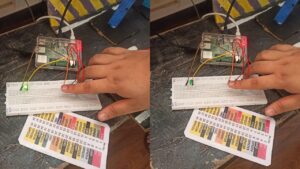
Solution using sensory motion for the wastage of electricity due to streetlights. (Deeksha Devadiga/South First)
What stood out the most among these students was their exuberant confidence and enthusiasm to present their ideas.
For the Student Showcase programme, the students identified a real-life problem and applied steps of design thinking to arrive at a solution.
Students brainstormed and designed the solution on their own. They presented their design (prototypes) to the class.
Chandan M, Jayanth, and Veerendra identified electricity wastage due to streetlights left on during daytime.
Using motion sensors, the students created a prototype which recognised the intensity of light. When a finger was placed on the sensor indicating darkness, the bulb lit up and it went off when natural light fell on it.
“Over the past four months, we learnt creative thinking, Python, and most importantly we gained enough confidence to stand in front of everyone and speak,” Chandan M, aged 14, told South First.
Chandan wants to be a Maths teacher and teach using computers.
Varun Gowda, another student, animatedly explained the solution his team had come up with for saving birds from radiation emitting from signal towers.
The boy was sarcastic. “Birds don’t go to big cities like Bengaluru because of the noise pollution, they prefer villages. To save them from radiation the government should install sensors above signal towers which will create a loud noise to scare them away from the tower,” he said.
Chandana and Ganahsree identified the problem of the absence of a library in their school. Using animations and design thinking, they held a survey and got majority votes to start a library in the school.
“Before the programme, we did not look forward to the computer class. It was one big boring period but since the programme, we look forward to the class everyday week. We barely spoke to each other or had inhibitions starting a conversation but now, we are very confident to talk to a room full of people,” Chandana said.
The Advitiya Foundation has plans to present the pilot programme’s results and seek government support for expanding the initiative to 50 government schools, benefiting students of classes 6, 7, and 8.
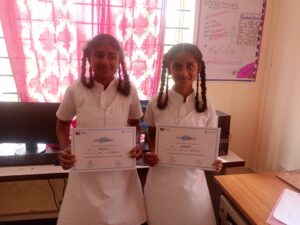
Chandana and Ganahsree identified a solution for the absence of a library in their school. (Deeksha Devadiga/South First)
The Foundation envisions transforming Code for Karnataka into a fellowship programme, hiring young, smart individuals to continue the mission.
It emphasised the importance of the government’s involvement and funding for scalability and sustained impact.
While Advitiya’s immediate focus is on Karnataka, there is potential for the Code for Karnataka initiative to serve as a blueprint for similar programmes in other states.
The Foundation remains open to the possibility of sharing its expertise and model with other regions, contributing to the larger vision of transforming computer education in government schools across the country.
Edited by Majnu Babu.

Jul 25, 2024

Jul 25, 2024

Jul 25, 2024

Jul 24, 2024

Jul 24, 2024

Jul 23, 2024